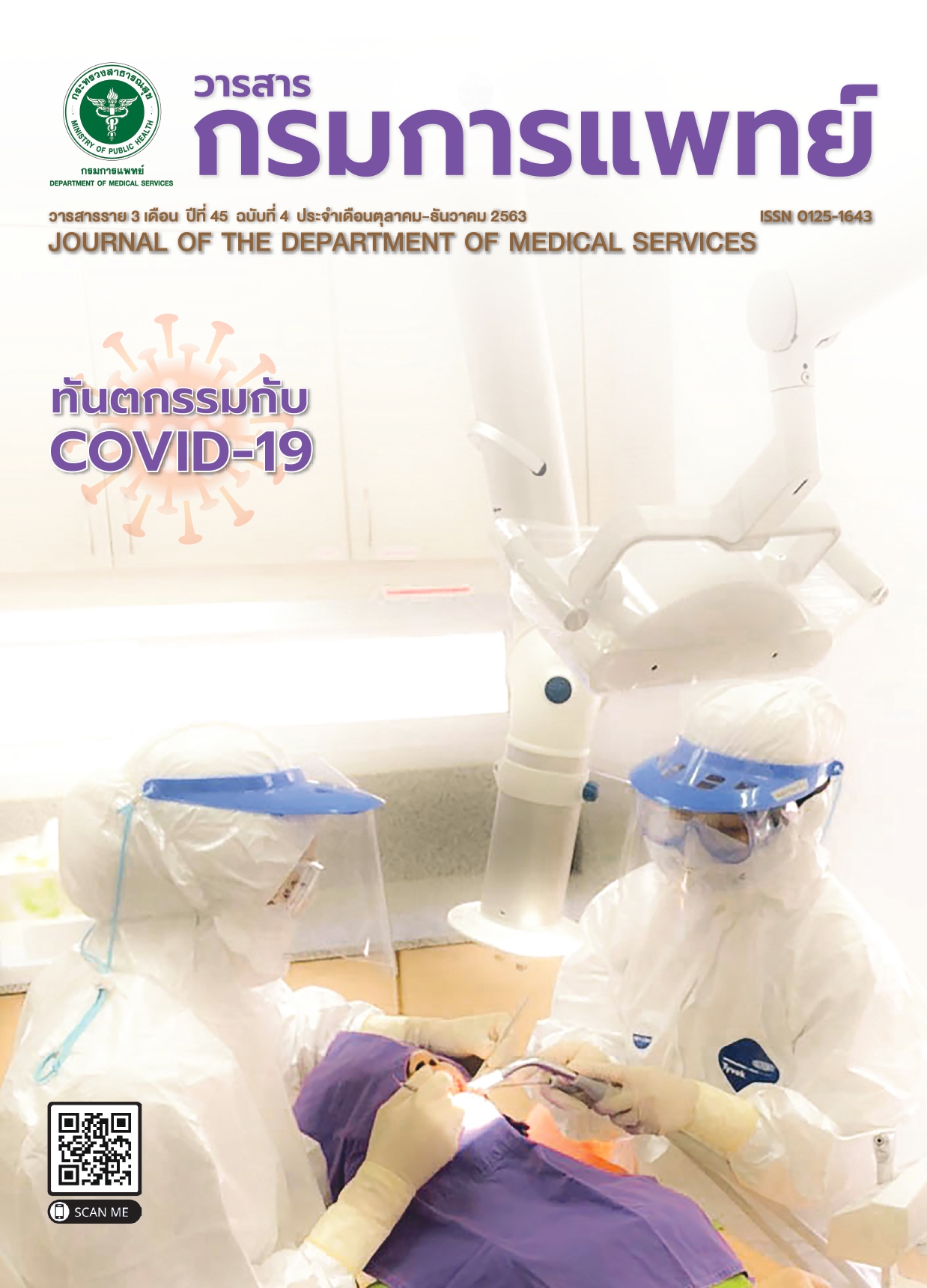Macro-and Micro-Costing of Accident and Emergency Services for Developing Standard Costing Guideline
Keywords:
Micro-costing approach, Cost of service item, Accident and emergencyAbstract
Background : Cost of service is important information to know the financial burden of the hospital and to manage health systems efficiency.
Objective : To study the macro and micro costing of accident and emergency department (A&E) in order to develop standard costing guideline.
Method : This was a research and development of cost analysis methodology on provider perspective. The standard top-down and micro-costing approaches were drilled down to cost of service item using electronic databases from hospital information technology systems. Eleven hospitals voluntarily participated this R&D (4 regional, 1 general and 6 community hospitals).
Results : The overall patient service costs of biggest hospitals were 2.2 billion baht with 129 million baht of patient service cost at A&E compared with only 39.9 million baht of direct labor, material and capital costs at A&E, and the rest (89.1 million baht) were the costs of other services to patients treated at A&E. The overall patient service costs of the smallest community hospitals were 61.8 million baht with 12.7 million baht of patient service cost at A&E compared with only 7.4 million baht the direct costs at A&E, and the rest (5.3 million baht) were the costs of other treatments to patients treated at A&E. The detailed allocations of costs to level of billing group (laboratory investigation) down to billing subgroup (clinical chemistry) and service item (dextrostix) were proven plausible with the existing hospital IT systems. The research allowed comparisons of service item costs among different sizes of hospitals.
Conclusion : Attention should be paid on development of detailed costing methodology with hospital information systems particularly the emergency services to synthesize the appropriate payment model for accident and emergency services in Thailand.
References
Medical department MOPH. Guidline for ER Service Deliverly.Nonthaburi: Medical department, MOPH; 2018.
Ministry of Public Health. Health Facility Act, B.E.2558,. Royal Thai Government Gazette,. 2015;132(26):23-32.
HFocus. Emergency room reform. HFocus: HFocus; 2020.
Tadadej C, Mongkolsomlit S, Suriyawongpaisan P. Evolution of Emergency Medical Service Systems in Thailand: A Systematic Review. Journal of Health Science 2014;23:513-23.
Srithamrongsawat S, Suriyawongpaisal P, Atiksawedparit P,Pannarunothai S. Radiness Evaluation of Public Hospitals to Universal Coverage for Emergency Patients (UCEP) policy.Bangkok: Department of Community medicine, Faculty of Medicine, Ramathipbodi hospital;2018.
Chang CY, Abujaber S, Reynolds TA, Camargo CA Jr,Obermeyer Z. Burden of emergency conditions and emergency care usage: new estimates from 40 countries.Emerg Med J 2016;33:794-800.
Galarraga JE, Pines JM. Costs of ED episodes of care in the United States. Am J Emerg Med 2016;34:357-65.
Ho V, Metcalfe L, Dark C, Vu L, Weber E, Shelton G, et al.Comparing Utilization and Costs of Care in Freestanding Emergency Departments, Hospital Emergency Departments,and Urgent Care Centers. Ann Emerg Med 2017;7:846-57.
Carpenter CR, Raja AS, Brown MD. Overtesting and the Downstream Consequences of Overtreatment:Implications of “Preventing Overdiagnosis” for Emergency Medicine. Acad Emerg Med 2015;22:1484-92.
Duckett SJ. Design of price incentives for adjunct policy goals in formula funding for hospitals and health services. BMC Health Serv Res 2008;8:1-9.
Thai Casemix Centre, Health Systems Research Institute. Unit Cost per Disease Phase 1 (second year).Nonthaburi: Health Systems Research Institute; 2019.
Khiaocharoen O, Zungsontiporn C, Khattiyod T, Wanwong Y, Baimuang C, Pannarunothai S. Unit Cost per Disease Methodology for Thailand: Micro-Costing Method. Health Systems Research Journal 2020;14:156-74.
The Comptroller General’s Department, Ministry of Finance.Service rates for medical reimbursement for government hospitals in 2006. The Comptroller General’s Department;2006.
Hospital charateristics under permanent secretary department,Ministry of Public Health [Internet]. 2561[cited 2020 Apr 2]. Available from: https://phdb.moph.go.th/main/index/downloadlist/1/3.
The number of specialty doctors 2561 [Internet]. 2561 [cited 2020 Apr 2]. Available from: www.tmc.or.th.
Resource of Medical emergency service FY 2561 [Internet].2561 [cited 2020 Apr 2]. Available from: https://www2.niems.go.th/th/View/DataService.aspx?CateId=3162.
A summary reports of illness in fiscal year 2561 [Internet].2561 [cited 2020 Apr 2]. Available from:http://bps.moph.go.th/new_bps/healthdata.
Chaingchaisakulthai K, Wongsin U, Suanrueang P,Thumvanna P, Sakunphanit T. Healthcare Expenditure Burden of Emergency Medicine Services of Private Hospital under a Project of Financial Reccomendation for Universal Coverage for Emergency Patients (UCEP). Medical Department Journal 2019;44:95-102.
Independent Hospital Pricing Authority. Australian Hospital Patient Costing Standards - Part 1: Standards-Version 4.0.Sydney: Independent Hospital Pricing Authority; 2018.
Downloads
Published
How to Cite
Issue
Section
License
บทความที่ได้รับการตีพิมพ์เป็นลิขสิทธิ์ของกรมการแพทย์ กระทรวงสาธารณสุข
ข้อความและข้อคิดเห็นต่างๆ เป็นของผู้เขียนบทความ ไม่ใช่ความเห็นของกองบรรณาธิการหรือของวารสารกรมการแพทย์



